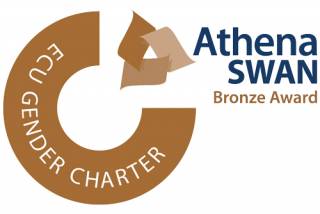This page contains diagrams and animations illustrating various aspects of Greek astronomy, as discussed in the article Ardua et Astra (Classical Philology 104 [2009], 354-75), but also of relevance to the article 'Ovid, the Fasti and the Stars' (BICS 50 [2007], 129-59) and to my commentary on Fasti Book 2.
The movement of the stars
We all know that in reality the Earth is rotating, while the stars
remain (relatively speaking) stationary. However, to observers on the
Earth it seems as if the Earth is stationary, while the stars rotate in
the heavens. To all observers in the Northern hemisphere, the stars seem
to rotate around a point known as the North Celestial Pole (very close
to the Pole star, Polaris). The apparent position of the North Celestial
Pole in the sky, however, is different for observers from different
latitudes: as one moves south from the North Pole to the Equator, the
North Celestial Pole appears to move from the zenith (the point direclty
above the observer) to the horizon. As the diagrams below will make
clear, this makes a difference to the way in which the stars appear to
cross the horizon (i.e. rise and set), and to the number of stars which
appear to rise and set.
The figure on the left illustrates three locations on the Earth's surface, at different latitudes:
- A - a location at the North Pole (90 degrees latitude)
- B - a location at near Florence in Italy (45 degrees latitude)
- C - a point on the Equator (0 degrees latitude)
An observer at the North Pole (point A - 90 degree latitude)
Movie 1 - Looking East at the North Pole. Right-click on picture and select PLAY.
To an observer at the North Pole (point A), the North Celestial Pole is
directly overhead (almost). This means that if an observer were to lie
on their back and look directly up, they would see the stars rotating
around the North Celestial Pole, in a plane parallel to the horizon. If
they were to look East, they would see the stars moving from left to
right, again, parallel to the horizon. No star would therefore ever
cross the horizon, and thus no star would ever rise or set. If one were
to look down on a model of the celestial sphere, the stars would seem to
be rotating in a clockwise direction. To an observer at the North Pole
looking directly upwards, however, they would seem to be rotating
anti-clockwise.
An observer near Florence in Italy (45 degrees latitude)
Movie Two: Looking east at the Florence (latitude 45 degrees). Right-click on picture and select PLAY.
To an observer at Florence (point B), the North Celestial Pole is
inclined at an angle of 45 degrees to the zenith (the point directly
above the observer). As the stars rotate around the North Celestial
Pole, to an observer looking East, the stars seem to be moving through
the sky at an angle of 45 degrees. The diagram shows how the stars close
to the North Celestial Pole will always be visible, never rising or
setting; similarly, those close to the South Celestial Pole will never
be visible; the majority of the stars, however, do now cross the horizon
(at an angle of 45 degrees), moving from the eastern to the western
horizon. As an observer moves further south, the angle at which the
stars rise becomes steeper and steeper, and a greater number of stars
will cross the horizon, and appear to rise and set.
An observer on the Equator (90 degrees latitude)
Movie Three: Looking east at the Equator (latitude 90 degrees). Right-click on picture and select PLAY
To an observer at the Equator (point C), the North Celestial Pole is
inclined at an angle of 90 degrees to the zenith (the point directly
above the observer). As the stars rotate around the North Celestial
Pole, they seem - to an observer looking East - to be crossing the
horizon vertically, i.e. to be moving directly upwards. The diagram
shows how at this location *every* star will now rise and set.
Morning (or Heliacal) Rising
The following animation gives a simplified picture of the movement of
the Sun and Sirius on several days around the true and apparent morning
rising.
Initially the sun reaches the horizon before Sirius, but with each
passing day Sirius reaches the horizon earlier, until it reaches the
horizon at the same time as the sun; as the days pass, it reaches the
horizon before the sun, eventually reaching the critical altitude while
the sun is still far enough beneath the horizon for the star to be
visible. With each passing day, the star rises earlier and is visible
for longer before being obscured by the rising sun. Right-click on the pictures below and select PLAY to begin (or repeat) the animation.
Day 1 (Aug 11)
Day 2 (Aug 15)
Day 3 (Aug 20)
Day 4 (Aug 26)
Day 5 (Sep 1)
Day 6 (Sep 6)
If you have any suggestions or comments, then please
.
This page was last modified on 18th May, 2012
 Close
Close



